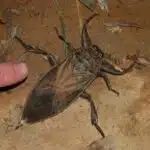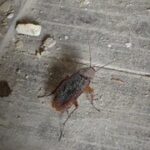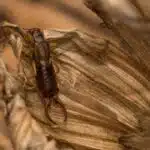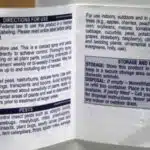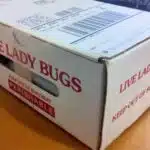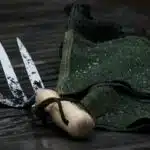It’s easy to overlook the significance of garden pests until its too late. According to a recent study, garden insect damage costs up to $45 billion per year in the United States alone. With that kind of money at stake, it pays to know which insects are most destructive and how to get rid of them. This article will focus on the 10 most destructive garden insects and provide strategies for getting rid of them once and for all.
Garden pests come in all shapes and sizes, but some are more damaging than others. Gardeners must be prepared to deal with these tenacious critters if they want their plants to remain healthy and thriving. The first step is understanding which insects cause the most destruction. From aphids to caterpillars, this article will explore the top 10 most destructive garden insects and offer sound advice on how to keep them out of your garden.
Finally, no matter what type of insect you’re dealing with, it’s important to have a plan of attack if you want to protect your plants from further damage. This article will provide simple tips and tricks for getting rid of these pesky pests so that you can enjoy a perfectly manicured garden all season long. So join us as we take a closer look at the top 10 worst offenders when it comes to destroying gardens – and learn how you can banish them from your own yard today!
Identifying Common Destructive Garden Insects
Identifying destructive garden insects is like searching for a needle in a haystack—it can be tricky and time consuming. That’s why it’s important to familiarize yourself with some of the common culprits. In this article, we’ll cover the 10 most destructive garden insects, as well as how to get rid of them.
The first garden pest on our list is Japanese beetles. These destructive creatures are known for their metallic green color and copper-brown wings, which are covered in tiny white dots. They feed on the leaves, flowers, and fruit of plants, leaving behind large holes that resemble skeletonized leaves. To get rid of Japanese beetles, you can use traps, handpick them off your plants, or apply insecticides such as neem oil or pyrethrin directly to affected areas.
Another common garden insect is the cabbage worm. These worms are the larvae stage of various butterfly species and they feed on leafy greens like kale, broccoli, and cabbage. They can also be found munching on other vegetables including tomatoes and peppers. To control cabbage worms naturally, try using floating row covers or applying Bt (Bacillus thuringiensis) to your plants. If these methods don’t work, you may need to use an insecticide like spinosad or permethrin to eradicate them from your garden beds.
Making sure your garden isn’t overrun by pests requires vigilance and dedication—but it doesn’t have to be overwhelming! By understanding the different types of destructive insects that might invade your yard and taking proactive steps to prevent them from doing so, you can keep your garden looking beautiful all season long.
Japanese Beetles
It isn’t uncommon to find various destructive garden insects in gardens. According to the National Gardening Association, Japanese beetles alone cause an estimated $450 million in damage every year to crops, flowers and trees across North America. This makes them one of the most pervasive and destructive insects to look out for in your garden.
Japanese beetle adults have a metallic-green body with copper-colored wings, and they feed on over 300 different types of plants – from beans, roses and raspberries to grasses and maples. To get rid of them, it’s best to start by removing adult beetles by hand or using a vacuum cleaner; you can also place traps baited with floral or fruity scents around your garden. These will attract adult beetles but won’t help with grubs – so if you suspect that you have a major infestation, use an insecticide specifically formulated for Japanese beetles (such as milky spore).
In addition to this, it’s important to remove any damaged plant parts from your garden – this will reduce the population of Japanese beetles in your area since the larvae feed on decaying plant matter. By practicing good cultural practices such as regularly cleaning up dead leaves and weeds, you’ll be able to minimize the presence of these pests in your garden. With these steps, you can protect your plants from further damage caused by Japanese beetles.
While chemical treatments are an option, it’s best to take preventative measures first before considering chemical treatments. Next up is discussing slugs and snails which can also wreak havoc on gardens if left unchecked.
Slugs And Snails
These slimy critters are a gardener’s worst nightmare, leaving behind trails of destruction through their voracious appetite. Slugs and snails are a common garden pest, devouring tender young plants in an instant. But with careful attention and the right methods, you can keep them from destroying your garden.
When dealing with slugs and snails, prevention is key. Removing any areas of standing water or damp soil will help discourage them from settling in your garden. You should also rake away any debris or mulch that could serve as hiding places for these unwelcome guests. Additionally, handpicking any offenders off plants is an easy way to get rid of slugs and snails without chemicals. If you’re looking for more organic solutions, using beer traps or copper barriers around the perimeter of your garden can help deter them from entering your space altogether.
Though it may be tempting to reach for chemical pesticides when battling these molluscs, they often do more harm than good by killing beneficial insects along with the pests. With the right preventative measures and natural methods, you can keep your garden safe from slugs and snails without introducing dangerous toxins into the environment. Now that we’ve covered these slimy pests, let’s look at another destructive insect – mealybugs – next.
Mealybugs
Irony of all irony, the fourth most destructive garden insects are none other than the mealybugs! With their white, fluffy bodies, these little creatures may actually look quite cute and harmless – but don’t be deceived by this deceptive appearance. Mealybugs are an incredibly destructive species that can cause serious damage to your garden if not dealt with promptly.
Mealybugs feed on plant sap and excrete a sticky substance known as honeydew which can attract other annoying pests like ants. They also spread diseases like powdery mildew which can further damage plants. So what’s the best way to get rid of mealybugs?
The first step is to spray them with a strong jet of water before applying insecticidal soap or neem oil to get rid of them completely. It’s also important to regularly inspect your plants for signs of infestation and take preventative measures like mulching around the base of your plants to keep mealybugs away. With some patience and diligence, you’ll be able to protect your garden from these pesky pests! Moving on from mealybugs, let’s look at the fifth most destructive garden insect: aphids.
Aphids
Aphids are one of the most common garden insects and can be incredibly destructive if left unchecked. These small, soft-bodied creatures feed on plant sap and can multiply quickly, leading to infestations that stunt the growth of plants and spread disease throughout your garden. Fortunately, there are a few steps you can take to get rid of aphids:
- Introduce natural predators such as ladybugs or lacewings into your garden.
- Spray plants with a mixture of water and insecticidal soap or neem oil.
- Prune affected foliage and dispose of it properly so it doesn’t spread any further.
- Use sticky traps to capture adult aphids before they have a chance to lay eggs in the soil.
By using these methods, you can get rid of aphids without having to resort to harsh chemical treatments that may harm beneficial insects or other wildlife in your garden. Moving on from aphids, let’s take a look at whiteflies— another destructive garden pest that requires swift action to keep in check.
Whiteflies
As we continue to explore the ten most destructive garden insects, let’s move onto whiteflies. Juxtaposed with aphids, whiteflies are another major pest that can plague gardens both large and small. These flying insects are related to aphids and share similar behaviors, but they have some subtle differences that set them apart.
These pesky bugs measure in at only 1/16 of an inch long, making them hard to spot until they become a real problem. They feed on plants by sucking out sap from leaves and stems, leaving behind a sticky residue called honeydew. Whiteflies reproduce quickly and can soon infest an entire garden in no time if not kept in check.
Controlling an infestation of whiteflies starts with prevention: removing any existing plants that harbor them before bringing new plants into the garden is key. If you already have an infestation, insecticidal soap or neem oil may be used in combination with physical removal methods like vacuuming or pruning to get rid of the pests for good.
Cabbage Worms
The garden can be filled with a variety of pests, but none as destructive as the cabbage worm. These tiny green worms seem harmless, but their appetite for vegetables and flowers makes them a formidable foe. Their presence is indicated by the damage they leave behind – chewed up leaves and stems that are destroyed in mere seconds.
The best way to get rid of them is to use an insecticidal soap spray or BT (Bacillus thuringiensis), which will kill the adult worms before they have a chance to lay eggs. It’s also important to keep your garden free of debris like old plants and weeds as this can provide shelter for the worms. Finally, you can also introduce beneficial insects such as ladybugs or lacewings into your garden to help control the population.
By taking these steps, you can help protect your garden from these pesky little creatures. But even with proper precautions in place, cabbage worms remain a constant threat to your vegetation. With vigilance and quick action though, you can put an end to their destructive reign and enjoy a beautiful, pest-free garden. Transitioning now into leafhoppers – another common garden pest – let’s explore what makes them so dangerous and how you can combat them effectively…
Leafhoppers
Leafhoppers are an annoying garden pest, causing an estimated $3 billion worth of damage to US crops each year. Not only do they spread plant diseases, but their piercing mouthparts also leave unsightly damage on leaves, flowers, and fruits. Here are four ways to manage leafhopper infestations:
Keep plants healthy – Make sure your plants are in optimal health by providing the right amount of sunlight, water, and nutrients. Weak plants are more susceptible to leafhopper damage.
Prune affected plants – Remove any leaves or stems that have been damaged by leafhoppers as soon as you see them. This will prevent the pests from spreading further and limit the amount of damage done to your plants.
Attract natural predators – Encourage beneficial insects like lacewings and ladybugs into your garden to help control the population of leafhoppers naturally. Planting certain flowers can also attract these predators to your garden.
Use insecticidal soap – If all else fails, using insecticidal soap is a good way to get rid of leafhoppers without damaging your plants or introducing harsh chemicals into the environment.
These methods can help reduce the number of leafhoppers in your garden and keep them from coming back again in the future. With proper management, you can keep these destructive pests away from your precious plants and enjoy a lush and healthy garden all season long! Moving on from leafhoppers, let’s take a closer look at tomato hornworms which can cause significant damage if left unchecked.
Tomato Hornworms
Tomato hornworms are the voracious villains of vegetable gardens everywhere, devouring tomato and pepper plants as if they were a delicacy. With their large green bodies and white stripes, they can appear almost majestic in a garden – until you realize the destruction they are capable of causing.
The key to controlling these critters is identifying them early and taking action to remove them from your garden. The best method for removing tomato hornworms is by hand-picking them off the plant, then disposing of them in soapy water or dropping them into a container of rubbing alcohol. If that sounds too labor intensive, there are several home remedies like garlic, cayenne pepper, or neem oil sprays that can repel or kill the worms. You may also choose to introduce beneficial insects like ladybugs or parasitic wasps that prey on these pests naturally.
By staying vigilant and taking preventive measures, you can protect your precious plants from falling victim to these relentless tomato hornworms. Thankfully, with a little effort and some natural pest control methods, you can keep these destructive caterpillars at bay and preserve your prized vegetable harvest.
Cutworms
Cutworms are one of the most destructive garden insects, and can cause severe damage to plants. For example, a family noticed their tomato plants wilting overnight – when they inspected the plants, they found cutworms had damaged the roots of their tomatoes. To get rid of these pests, it’s important to identify them first. Cutworms are about 1-2 inches long, have smooth skin and appear as if they have been cut in half. They can be grey, brown or black in color with white stripes on their sides.
The best way to eliminate cutworms is to handpick them from your garden or use natural predators such as birds or beneficial insects like predatory wasps. Additionally, you can use traps such as sticky cards placed near your plants and create barriers around the stems of your plants using aluminum foil strips or cardboard collars. Lastly, using insecticides is often effective but should only be used as a last resort due to potential harm to other beneficial insects in your garden eco-system.
With proper identification and pest control methods, you can help protect your garden from cutworm damage. Next up is learning how to deal with another destructive garden insect: squash bugs.
Squash Bugs
Squash bugs are a pesky garden insect that can cause severe damage to your squash and other related plants. They pose a significant threat to gardens, with the potential of causing up to 80% crop loss if left unchecked. As such, it is important to know how to identify and control them before they have the chance to wreak havoc on your crops.
Squash bugs are typically about half an inch long and brownish in color, with a shield-like shape on their backs. They feed on the leaves and stems of squash plants by sucking out sap, which eventually causes yellowing or wilting of the plant. Additionally, these bugs lay clusters of copper-colored eggs on the undersides of leaves that turn black as they mature.
The most effective way of controlling squash bugs is by handpicking them off your plants regularly and disposing of them in soapy water or rubbing alcohol. If you find large infestations, consider using insecticides or diatomaceous earth around the base of affected plants for extra protection. No matter what method you use, it is important to be proactive in order to prevent future outbreaks. Transitioning into ways to prevent garden insects will increase your chances of keeping your garden safe from harmful pests like squash bugs.
Ways To Prevent Garden Insects
Do garden insects really have a place in our gardens? Or can we prevent them from taking over our outdoor spaces? According to recent studies, garden pests are inevitable but there are several steps you can take to reduce their population and keep your garden healthy.
First, it’s important to know what types of garden insects you’re dealing with. Identifying the type of insect that is causing damage in your garden can help you determine the best way to tackle the problem. You should also check for signs of infestation, such as chewed leaves or damaged stems, and take action accordingly.
Second, make sure your garden is properly maintained. If a plant is not cared for properly, it will attract more pests and make the problem worse. Regularly prune away dead growth and remove weeds to reduce potential hiding spots for bugs. Additionally, use pest-resistant plants when possible and practice crop rotation to protect vulnerable plants from infestations.
Finally, one tip that could help you manage garden insects better is to keep an eye out for beneficial bugs such as ladybugs or praying mantises which prey on some common pests. Attracting these beneficial bugs into your garden can help you better manage infestations naturally without having to resort to chemical solutions.
Natural Solutions For Garden Insects
We’ve all heard the saying ‘There’s no rest for the wicked’, and this couldn’t be more true when it comes to garden pests. While there are some chemical solutions, thankfully there are also natural ways to get rid of those pesky critters. Let’s take a look at 13 natural solutions for garden insects.
For starters, one of the most popular natural remedies is introducing beneficial bugs into your garden. Ladybugs, lacewings, and other insect predators can help keep certain bug populations in check. If you’d prefer something more hands-on, you can also manually pick off offending insects and relocate them from your garden to a safer area.
If these methods don’t work for you, don’t worry! There are plenty of other tactics available such as using garlic or hot pepper sprays as deterrents or even making traps out of beer or sugar water. You can even make homemade organic pesticides using ingredients like neem oil or soap-based sprays.
No matter which option you choose, it’s important to remember that prevention is key! By regularly removing weeds and debris from your garden and ensuring proper soil drainage and ventilation, you’ll be able to nip any potential infestations in the bud before they become an issue.
Chemical Solutions For Garden Insects
An incredible coincidence – the 14th solution for garden pests is chemical solutions. The timing couldn’t be more perfect as this method of pest control has been gaining popularity due to its effectiveness and cost-effectiveness. With a few simple steps, gardeners can easily utilize chemical solutions to rid their gardens of destructive insects.
Here are three essential points on chemical solutions: • Benefits: ◦ Quickly and efficiently eliminate garden pests ◦ Cost-effective ◦ Provides long-term protection • Drawbacks: ◦ Can be harmful to beneficial insects ◦ Possibility of environmental contamination if misused or applied incorrectly ◦ Potential health risks associated with exposure to chemicals • Application Guidelines: ◦ Follow label instructions carefully ◦ Use only when necessary and in the smallest amount possible ◦ Apply when temperatures are moderate, avoiding days that are too hot or cold
Chemical solutions provide a powerful tool for gardeners looking to make sure their gardens remain pest-free. It’s easy to apply, but it’s important that any application follows manufacturer guidelines so that the environment and people aren’t put at risk from potential contaminants. It may not be suitable for everyone, but its effectiveness makes it a viable option for many gardeners. With this knowledge, we can now move on to maintenance strategies for controlling garden insects without needing to take further drastic measures.
Maintenance Strategies For Controlling Garden Insects
Gardening is a great way to enjoy the outdoors and get some exercise, but it can quickly become a nightmare when garden pests set in. With an estimated 40 percent of insects considered garden pests, it’s important to know how to prevent and control them. Maintenance strategies are an essential part of keeping unwanted insects away from gardens.
One of the most effective maintenance strategies for controlling garden insects is making sure there are no standing water sources near the plants. Standing water can become breeding grounds for mosquitoes and other insect pests. Additionally, mulching around plants can help discourage some types of bugs from settling in your garden. Mulch also helps retain moisture in the soil which keeps pests away. Finally, cleaning up any fallen leaves or debris regularly will help keep your garden looking its best and reduce pest infestations.
By following these simple maintenance tips, you’ll be able to keep your garden looking great and free from pesky bugs! Regularly checking for signs of insect damage or infestation can also alert you to any potential issues early on so they can be addressed before they become major problems. With a little bit of effort, you can have a beautiful pest-free garden all season long!
Frequently Asked Questions
What Are The Long-Term Effects Of Using Chemical Solutions To Get Rid Of Garden Insects?
The use of chemical solutions to control garden insects has become a common practice, but what are the long-term effects? This is a question we must all consider if we want to keep our gardens safe and healthy. That being said, let’s take a closer look at the potential consequences of using chemicals as pest control.
We may think that spraying chemicals on garden insects will be an easy fix, but it’s worth remembering that there’s no such thing as a free lunch. Chemical solutions can have serious repercussions for both our gardens and the environment in general. It’s like playing with fire: you might get away with it once or twice, but eventually the flames will catch up with you.
Using chemical solutions to get rid of garden insects can lead to soil contamination and water pollution, which can damage the health of both plants and animals for years to come. In addition, this type of pest control often does not address the underlying cause of the problem – meaning that with time, new generations of pests will simply replace those that were eliminated by chemical treatments. Ultimately then, this approach is far from sustainable in the long run!
Are There Effective Organic Treatments To Keep Garden Insects Away?
It’s easy to want to reach for the chemical solutions when dealing with garden pests, but what are the long-term effects? We all want our gardens to look beautiful and be free from destructive insects, but at what cost? In this article, we’ll explore the effectiveness of organic treatments and why they might be a better route when it comes to keeping garden pests away.
The idea that ‘the only good bug is a dead bug’ has been around for many years. However, this anachronism fails to take into account the complexity of nature and how ecosystems rely on each other in order to thrive. While chemical solutions may offer a quick fix, they can also have detrimental consequences in the long run. These treatments can destroy beneficial insects, disturb the balance of your garden’s ecosystem, and even pollute nearby water sources when washed away by rain or irrigation systems.
Organic treatments are often more effective in getting rid of garden pests than using chemicals or pesticides. They can be used preventatively by encouraging natural predators (such as ladybugs) or by using physical barriers (like fences or screens). Using healthy gardening practices such as rotating crops, avoiding overcrowding plants and keeping them well irrigated will also help keep insects away without causing harm.
So next time you’re considering ways to keep garden insect pests away from your plants, remember there are alternatives that won’t leave lasting damage. With a bit of patience and understanding of the environment, you can create an oasis that’s not only beautiful but also sustainable too!
What Kind Of Maintenance Is Necessary To Prevent Garden Insects?
Maintaining your garden and keeping it insect-free can seem like a daunting task. To make it easier to keep pests away, there are some important steps you can take. The first is to ensure that your plants are healthy and well looked after. Make sure they are receiving adequate water, sunlight, and nutrients, as this will help them resist infestations. Additionally, staying on top of maintenance such as weeding, mulching, and pruning can reduce the presence of insects.
It’s also essential to monitor the area for signs of insect activity. This means checking for eggs or larvae in the soil or on leaves and flowers, especially if you notice any changes in plant appearance or health. Being vigilant and taking action quickly when you spot any problems can stop them from getting out of hand.
Finally, using organic treatments such as natural predators or plant-derived solutions is an effective way to combat garden pests without resorting to chemical pesticides which can be dangerous for wildlife and humans alike. Just remember that these need to be applied regularly in order to be successful in keeping insects away from your plants!
TIP: Getting into a regular routine with your garden maintenance will help keep pests at bay – set yourself reminders or tasks so you don’t forget!
How Can I Tell If There Are Garden Insects Present In My Garden?
Ah, the joy of gardening! Nothing quite beats the feeling of watching your prized plants grow and prosper. But what if those lovely plants are being secretly sabotaged by garden insects? If you don’t know how to tell if there are garden insects in your garden, then you could be at risk of losing all that hard work!
Well fear not, dear reader – I’m here to help. One way to tell if there’s been an invasion of garden insects is by looking out for signs like holes in leaves or stems, discoloured patches on leaves, or sticky substances that appear on leaves. These can be telltale signs that something is amiss in your garden.
Another good tip is to check around the base of your plants for any small creatures scurrying about. If you spot any tiny bugs or larvae then it’s likely they’re causing damage to your plants. The best way to find out is to investigate further and identify just what kind of pests have taken up residence in your beloved garden. That way you can take the necessary steps to get rid of them before it’s too late!
Garden pests can seem like a daunting problem, but with a little bit of knowledge and vigilance they won’t stand a chance against you! So don’t be afraid – arm yourself with some bug-busting knowledge and get back out into the garden and enjoy it again.
How Can I Tell The Difference Between Beneficial And Destructive Garden Insects?
When it comes to garden insects, there are both beneficial and destructive species. It’s important to be able to differentiate between the two, so you can protect your plants from harm and encourage helpful insects to stay in your garden. Here’s how you can tell the difference between beneficial and destructive garden insects:
Look at their behavior: Beneficial insects like bees, hoverflies and ladybugs tend to fly or crawl around looking for food. They feed on other small insects and don’t damage plants. Destructive insects like aphids, slugs, and caterpillars feed on foliage and flowers.
Notice where they are located: Beneficial insects can be found near flowers or on leaves that are healthy. Destructive pests tend to be found on damaged or wilted plant parts.
Check for signs of damage: If your plants have holes in the foliage or stems that look chewed up, it’s likely that a destructive insect is present. These pests will also leave behind sticky residue or webbing if their numbers become large enough.
Take note of their size: While this isn’t always a reliable indicator, smaller bugs tend to be more harmful while larger bugs are usually harmless.
Knowing how to identify beneficial and destructive garden insects is key when it comes to maintaining a healthy garden environment. By taking notice of their behavior, location, signs of damage, and size – you’ll be able to protect your plants from harm while encouraging helpful insects!
Conclusion
The presence of garden insects can be a constant source of concern for any gardener, as some of them can cause significant damage to plants. Knowing how to identify and differentiate between beneficial and destructive garden insects is an essential part of keeping your garden healthy. The right combination of chemical and organic treatments can help you control the population of destructive garden insects in your garden while still allowing beneficial ones to thrive. It is also important to remember that regular maintenance and monitoring are critical if you want the long-term success of your garden.
When it comes to getting rid of destructive garden insects, there is no one-size-fits-all solution. Instead, it is important to understand the lifecycle and habits of the specific type of insect you are dealing with in order to find the best approach for controlling it. Just like a puzzle, each piece needs to fit perfectly together in order for the whole picture to be successful – just like all the different methods used for controlling pests needs to fit together for successful pest management.
Overall, managing pests in a garden requires patience, dedication and knowledge about the particular species present. It’s like trying to solve a jigsaw puzzle; each piece has its own shape, color and size that needs to fit perfectly with others in order for it all work together as one coherent image. With careful observation and correct implementation, it is possible to keep destructive garden insects away from your plants without compromising their health or growth potential – allowing you enjoy another beautiful harvest season!



